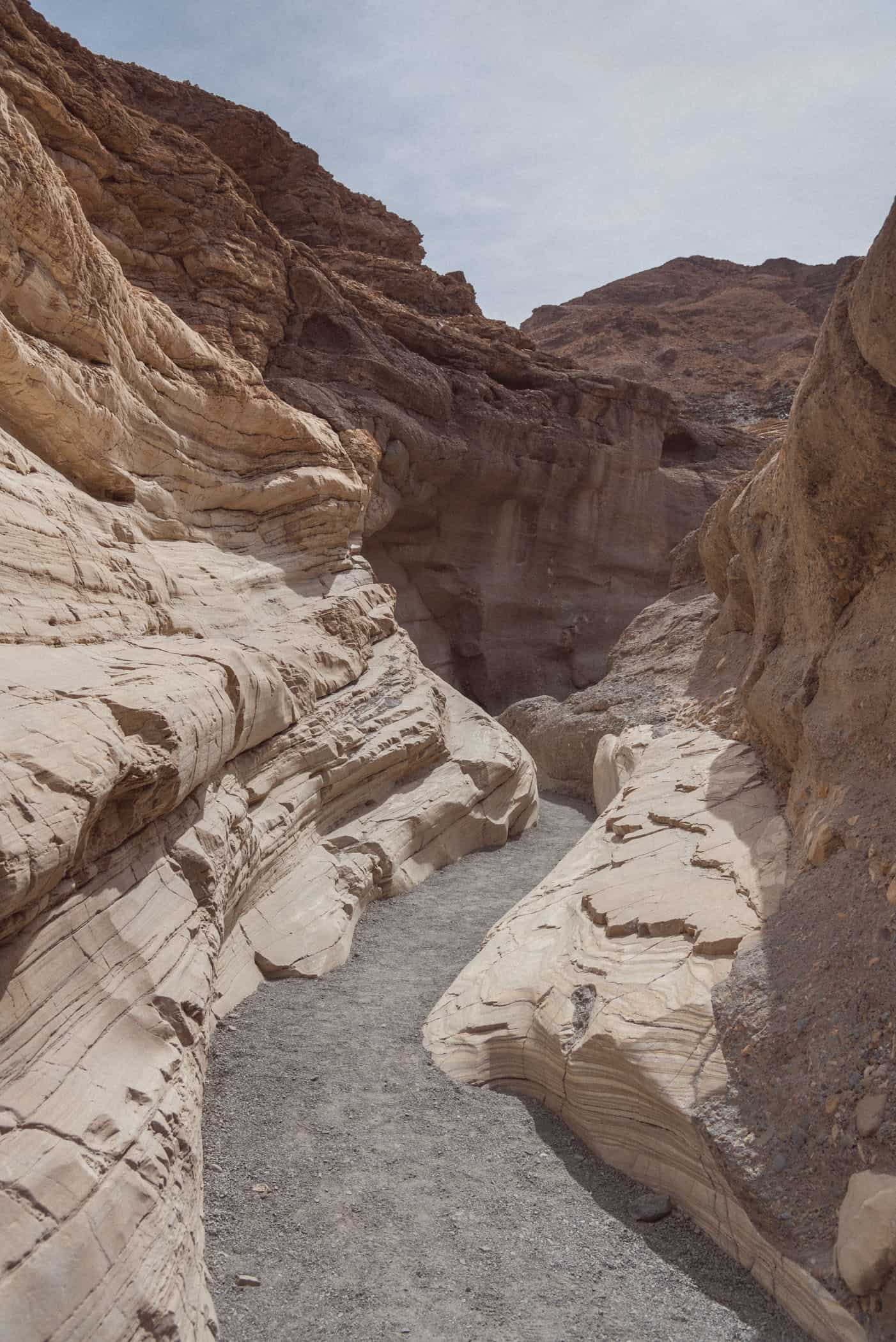Hike | Death Valley National Park | United States
Your Hiking Guide to the Mosaic Canyon Trail in Death Valley
Text | Anninka Kraus
Photography | Tobias Kraus

US California
Mosaic Canyon is a narrow slot canyon near Stovepipe Well Village and Mesquite Flat Sand Dunes in Death Valley National Park. Featuring fascinating narrows made of smooth marble walls that alternate with the canyon’s namesake rock formation, mosaic “breccia”, the canyon is one of the park’s most scenic and busiest attractions.
Even if you’re not keen on a long hike, I highly recommend walking to where tiny fragments of rocks in various colors are embedded in a kind of natural cement, which really do make the canyon walls look like a giant mosaic. It’s a beautiful sight!
Those happy to explore more of the canyon can follow the moderate, 6.4km Mosaic Canyon Trail as it winds beautifully along the rocky washes between the polished marble walls. When the trail abruptly meets a dead-end where large boulders block the passage up the canyon, follow the arrows made of small stones.
The easy and short scramble up and around the rocks will take you deeper into the canyon with narrows that wind ever more tightly until the trail meets the first dryfall. If you want to continue, you need to backtrack about 50 meters down the canyon to where a faint footpath climbs up the canyon wall on your right.
Follow that bypass trail to the third series of narrows with lots of polished rock until the trail meets its final turn-around point at an even larger and impassable dryfall.
Return by the same route.





Death Valley National Park | California
Hike | Out & back trail | 2-3 hours
track details.
Start/End: The trailhead is located at the end of Mosaic Canyon Road (unpaved but 2WD accessible) in Stovepipe Wells Village
Distance: 6.4km km return
Time: 2-3 hours return
Elevation: 490m meters (+/-) (lowest point: 285m / highest point: 710m)
Difficulty: moderate
Best time to hike: early morning or late afternoon in late autumn to early spring
Further information: Official National Park Service website